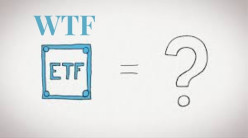Let us break this down:
1. You buy 100 shares of a stock
2. Stock takes off and appreciates
3. After some time you sell the stock
4. The US Government arrives
5. Takes a share of your profits
6. Equals Capital Gains Tax
Now, lets piece it together: first, you buy 100 shares of a stock and it makes a profit for you over some time, later, you sell the stock and the US Government comes in and takes a share of your profits. This is what capital gains tax is.
If you own external assets including but not limited to, stocks, bonds, properties, or precious metals, the government takes a share of the profits you make. The tax you owe when an asset that you own appreciates is defined as a capital gains tax. There are two different types of capital gains taxes: long and short.
Long: Usually taxed at either 23.8%, 20%, or 15% based on individual income. This is the tax paid on an asset that appreciates and is held for at least one year and then sold. It is advisable therefore, to wait a year, qualify for the cheaper rate, and then sell your asset.
Short: Usually taxed at your ordinary income bracket (the same tax rate that is taken from your income) which can be as high as 39%. This is what happens to an asset when it appreciates and is sold within the year. This could be a 16-19% difference is some cases. Imagine you made $100,000 from an asset and are in the highest tax bracket that could mean almost $40,000 would go to Uncle Sam, but if you planned and fell into long term tax rate you would pay about $20,000 and save $20,000.
As you start to collect assets and look for other ways to bring income in, it is key to understand how this tax system works and what ways you can get the most out of the appreciation of your assets. Above is just a simple example on how you can save some money on taxes but there are plenty of other methods for tax planning.












